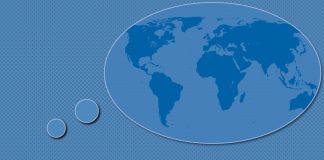The United States is under enormous pressure. The nature of the particular pressure is unique, though pressure on the United States from various forces is normal, as it is with other nations. What makes this pressure unique, aside from its biological origin, is that it has been so intense that virtually all systems are seeking to cope with the problem, both in defining and responding to it. This is largely true of all countries, but each responds to it differently, based on their institutional and cultural frameworks that existed before the coronavirus outbreak. Much of what we say about the virus is universal, and there are commonalities in the response, but ultimately each nation’s response must be understood on its own terms. Understanding the model allows us to understand events, stresses, failures and successes.
At the moment, there are four distinct systems operating in the United States: the medical, the economic, the social and the geopolitical. Controlling these, and in turn being controlled by them, is the political structure. This obviously includes the president, on whom attention is always focused, but let’s not forget the rest of the executive branch and the vast and distinct bureaucracies operating within it, the judiciary, the Congress, and every state government. Already we have seen that, in times of crisis, the individual states are the most decisive actors in the short run.
At the moment, the crisis has been defined by the medical system, the overriding goal of which is to limit the disease, infections and deaths. The medical system has developed no cures or preventatives. A vaccine is at least a year and a half away, and there is no obvious medication available yet. The medical system is thus asking for what it needs – supplies and equipment such as ventilators, masks and tests – which necessarily pressures the economic and political systems to produce them.
The best countermeasure, then, is social. The disease appears to spread primarily by human contact, so the emphasis of the medical system has been to limit human interaction. It’s a minimally intrusive and (for now) viable strategy to mitigate infection.
But this strategy has a significant and immediate effect on the economic system. In other words, the best available medical solution creates massive economic dislocation. Much of the economy cannot be sustained with social distancing. Social distancing reduces economic activity and could lead to economic failure. The danger of the social distancing strategy in all of its dimensions is not only the immediate decline of the economy but its systemic destruction. The destruction of current business activity can result in permanent destruction.
The solution is to mitigate the effects of the medical system by using political means to dramatically support the economy on a short-term basis. There is a serious question of the long-term effects on the economy of a solution that involves infusions that will equal between 5 and 10 percent of our gross domestic product. But the risks of absorbing the cost of the medical solution are too high not to take this step.
We remain at the stage where the primary concern of the social system is avoiding being infected by the disease, and surviving it if it strikes. The extreme measures imposed by many states are, broadly speaking, being accepted. But they are not sustainable, at least not for the amount of time the medical system needs to resolve the problem. Short-term measures such as prohibiting foreclosure for a month or two may help people ignore the fact that they are isolated and, in some cases, jobless, but at some point it will create a material crisis.
Add to this that isolation can only be a short-term solution because humans are social animals. Creating a system in which all other human beings are seen as potential threats will have unfortunate effects. But to be simplistic about this, there is the concept of cabin fever. People confined to their homes, however comfortable, will rebel. Their understanding of risk will change as the risk of going mad in a small apartment with two children competes with the fear of the virus. Breaking quarantine and incurring the risk of disease seems irrational only if you regard the risk of disease as a paramount consideration. Mental health and finding a job can rationally take precedence.
The longer-term outcome of the medical solution and the damage to the economy could be a depression neither the government nor society can cope with. If the short-term solution costs 5-10 percent of GDP, then long-term solutions will soak up wealth at a fantastic rate, undermining all aspects of the economy.
In sum, the medical system’s only solution to an unprecedented event has stunned an economic system that the political system is trying to stabilize. Together they will lead to a breakdown in the radical quarantine systems and a massive social disturbance. This will, in turn, generate political instability and sow distrust in social institutions. This is all avoidable in the short term, but the longer this drags out, the less the time frames are in sync.
No single system is at fault. Everyone now knows what should have been done, and undoubtedly there are some who argued for it. But societies are complex machines, and the response to a hypothetical threat that would cause this kind of instability will not be action, and few of us would have accepted the regime imposed on us to deal with the hypothetical. The system operated as well as a system involving 300 million people could. And it has crafted solutions driven by short-term considerations. Improvisation on this scale is most effective in hindsight.
Still, there is a mismatch in the time frame of systems. It will take time for the medical system to develop a vaccine. The economic system cannot withstand social distancing for that long without consequence. The social system cannot withstand the stress of isolation coupled with fear of poverty. The stresses snowball. And no one is to blame as it appears that there is no solution.
To the extent that there is a solution, it is in releasing people from isolation without risking their lives. The medical system is the only one that can do that. It is a system built on the avoidance of all risk possible in the introduction of medicines and vaccines. This is not only a practical consideration but a deep ethical principle of medicine. But given both the damage wrought by the disease and the damage caused in combatting the disease, including the very real risk of economic and social havoc, I wonder whether the medical ethic of first doing no harm can be extended to the economic and social reality. A principle of calculated risk, with the federal government passing laws to protect error, might shift the medical timeline sufficiently to short circuit non-medical risks. I know nothing about the creation of medical solutions and am not speaking with any knowledge of that, but in looking at the problem, the rapid introduction of medicines, even those with some potentially disastrous side effects, might align the timelines to give us a softer landing. Otherwise, we cannot withstand months of isolation and social distancing.
I have left the geopolitical for last because it is the longest track of all. For now, normal geopolitical processes have been suspended. The U.S. did not respond to Iraqi-Iranian missiles. The confrontation between Turkey and Russia has disappeared for now. And China and the United States are trading insults but speaking little of trade wars. At the same time, borders are closing as foreigners are seen as potential carriers. Air travel is grinding to a halt. As divisions reemerge, we should remember that economic destruction due to war gave rise to Hitler and Lenin. Economic destruction in any form is destabilizing. But that is for later.
For now, the crisis is not only the virus but the inability to combat it without massive economic cost, and ultimately social unrest. During Europe’s great Black Death, citizens marched with torches and burned those they felt were ill and those they felt were responsible for the illness. It was not only the plague that created a time of horror but the legitimate fear it generated in people and the inability of the state to protect them, in a world where kings were as likely to die as peasants. The virus is dangerous. The follow-on effect can be far more dangerous.






